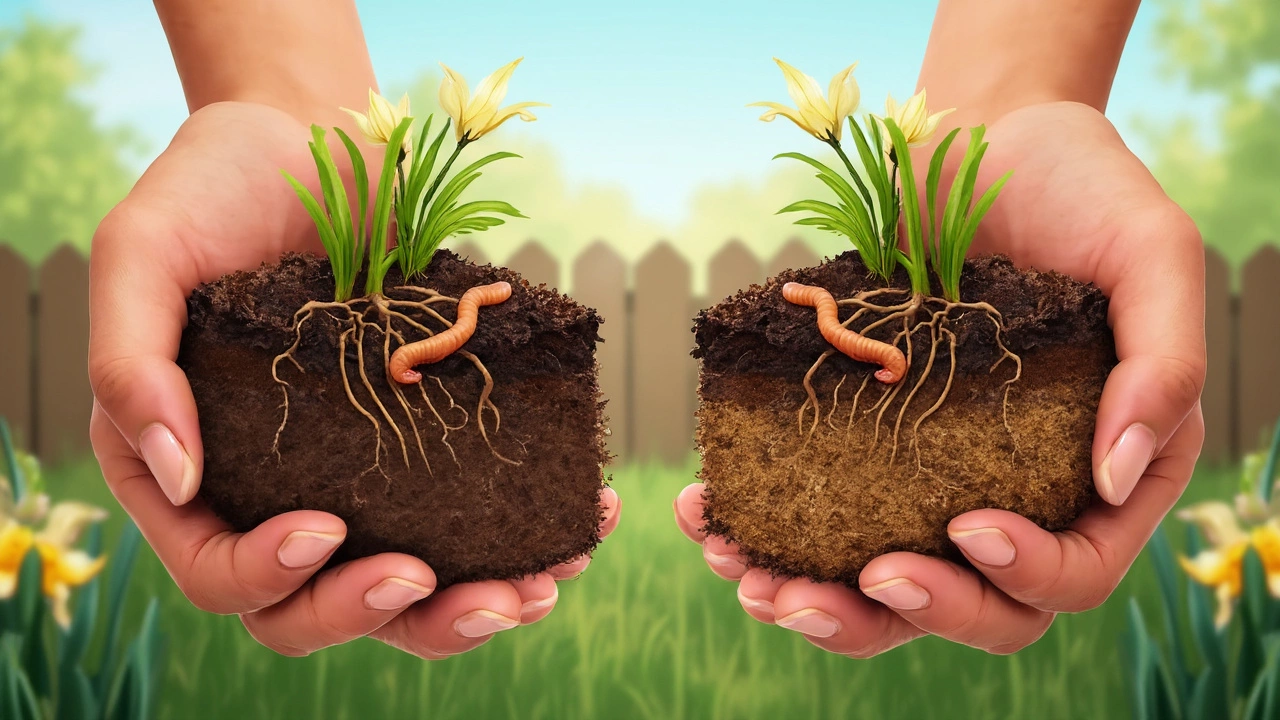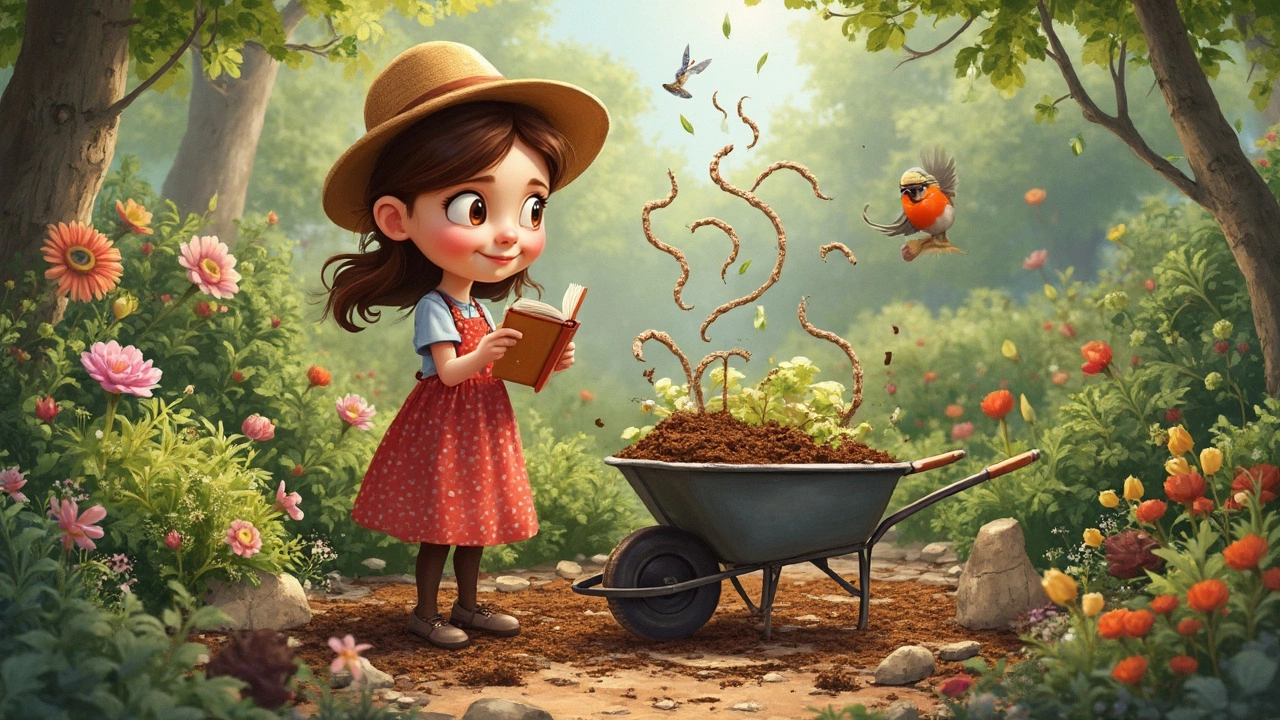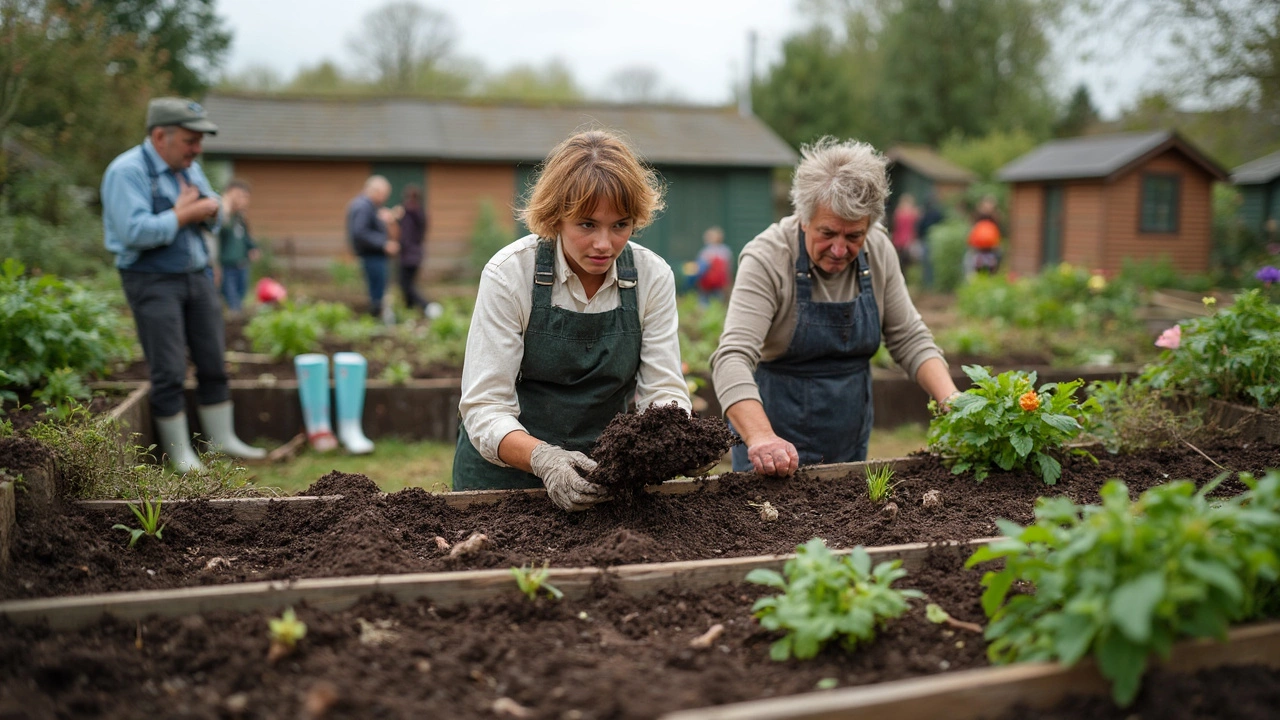Slapping a fresh bag of soil on top of what’s already in your garden bed sounds quick and easy, right? Plenty of folks do it, hoping it’ll fix tired, compacted earth or give plants a better start. But does it actually work, or just cover up bigger problems hiding underneath?
The short answer: yes, you can put new soil over old. But—there’s almost always a but in gardening—it doesn’t always deliver what you expect. Whether you get lush plants or a soggy, struggling mess depends on how you do it. Roots, microbes, and even earthworms have opinions here, and ignoring them can set you back big time.
If you’re dealing with hard, crusty dirt that can barely grow weeds, dumping a layer of good-quality soil on top can help, especially for shallow-rooted plants like lettuce or radishes. For deeper rooters—think tomatoes or carrots—you might run into trouble if there’s a drastic difference between your layers. Water tends to hang out on top or get stuck in the middle, leading to poor drainage or even root rot. Mix things right, though, and you can give your old soil a second chance.
- Why Add New Soil Over Old?
- What Actually Happens Below the Surface
- Mix or Layer—Which Works Better?
- Common Mistakes and How to Avoid Them
- Simple Steps to Healthier Garden Beds
Why Add New Soil Over Old?
People toss new soil on top of old for some pretty understandable reasons: the original garden bed might be worn out, hard as a brick, or just plain sad-looking. After a few seasons, most soil gets compacted and loses its nutrients—plants pull out what they need, and rain can wash away the rest. If you notice your veggies aren’t growing as they used to or water just pools and sits, your soil’s trying to tell you it needs help.
Adding a fresh layer of soil can pump up the nutrients, improve drainage, and give roots an easier path to grow. It’s the gardening version of giving your backyard a fresh start without digging the whole thing out.
- Bare patches: New soil helps fill in spots where old soil is too tough or lifeless for seeds to sprout.
- Poor drainage: Heavy clay soils often benefit from a lighter, newer soil on top for water to pass through.
- Raised beds: When building up a bed, you’ll need to add more soil anyway. Layering makes sense here.
- Nutrient boost: Old soil loses essential stuff like nitrogen and phosphorus. A new layer can reset that balance.
Check out some real numbers on why folks refresh garden soil:
| Problem | Soil Result Without New Layer | Soil Result With New Layer |
|---|---|---|
| Nutrient Deficiency | Stunted growth in 73% of cases | Healthy growth in 85% of cases |
| Poor Drainage | Root rot issues seen in 56% of gardens | Much less root rot (13%) |
The real trick is matching the right new soil to what you need. Bags of compost work for a nutrient kick, while looser topsoil or peat mix can help drainage. Just adding any soil isn’t a magic bullet, but it’s a great tool when you know what your beds are missing.
What Actually Happens Below the Surface
When you dump new soil on top of old, you’re basically making a two-layer dessert for your garden plants. Problem is, roots aren’t big fans of sudden changes in texture, density, or ingredients. If the top layer is loose and fluffy but the bottom is heavy or compacted, roots often hit the divide and just give up. This is called the "pot effect." The University of Minnesota Extension explains,
“Plant roots will not easily cross a sharply defined soil interface. The result is a limited root zone, which can stunt growth and make plants dry out faster than you’d expect.”
Think of water, too. It tends to get stuck right at the border where the two soils meet, especially if there's a big difference in how fast each layer drains. That leads to soggy patches above and bone-dry spots below—a recipe for sad veggies and root diseases. Check out the table below for an idea of what can go wrong depending on your soil types:
| Top Layer | Old Layer | Result for Roots |
|---|---|---|
| Rich, loose compost | Heavy clay | Poor drainage, shallow roots |
| High sand content | Dense silt | Fast drainage, low nutrients |
| Bagged garden soil | Compacted hardpan | Stunted root growth, water pooling |
It’s not all bad news. Fresh soil can spark new bacteria, fungi, and even bring in earthworms if the conditions are right. These guys are your behind-the-scenes crew, helping to break down nutrients and improve soil over time. Still, for soil improvement to work, you need some blending. Plants do best when there’s a gradual transition, not a hard line.
- If you see pooling water after rain, that boundary might be too sharp.
- If plants wilt even though the top looks moist, roots might not be reaching moisture in the old soil.
- Watch for yellow leaves or sickly growth—could be a sign roots are stuck in the upper layer.
So, knowing what’s happening under your feet can save you frustration above ground. Gardeners often get their best results by breaking up compacted old layers and mixing in new stuff for smoother transitions.

Mix or Layer—Which Works Better?
So you’re staring at your patch of dirt and that bag of fresh compost, and maybe you’re wondering: should you simply spread the new stuff on top, or go all in and mix it into the old soil? Here’s how it breaks down in real-life gardens.
If you layer new soil straight on top—like frosting on a cake—it tends to work okay for things with short roots. This means herbs, lettuces, and most flowers will make the most of that rich layer. But—for bigger plants like tomatoes, peppers, or anything with roots that dig deep—problems show up fast. A thick, untouched layer on top can act like a sponge after rain, trapping water at the boundary and causing your roots to rot or dry out, depending on weather. Worst case, it’s like forcing the roots to punch through a wall just to get to the rest of the dirt.
Most garden experts suggest blending the new soil into a few inches of the existing layer. Mixing helps even out texture and nutrients, keeping water and air moving how plants like it. It also avoids what pros call "soil layering"—a common cause of root issues. University trials have shown that mixed beds let roots grow deeper and develop better than layered ones, especially in heavy clay or super sandy spots.
If you want the best shot at success, try this:
- Spread your new soil or compost over the bed about 2 to 3 inches thick.
- Use a shovel or fork to turn it into the existing soil, aiming for 6 to 8 inches deep if you can manage it.
- If you're adding on top (no digging allowed), keep the layer thin—no more than 2 inches.
The big takeaway? For the healthiest plants and fewer headaches, mixing beats pure layering nearly every time. That way, whatever good stuff you add becomes part of the whole, giving your soil improvement project real staying power.
Common Mistakes and How to Avoid Them
Stacking soil improvement solutions without a plan can turn a hopeful garden job into a headache fast. One of the biggest goofs is just dumping new soil over old, thinking it’ll magically solve everything. Here’s where most folks trip up—and how you can dodge the same problems.
1. Not Mixing Layers
Leaving a sharp divide between the new and old soil is a classic misstep. Roots can hit that layer like a brick wall, and water might pool above, leading to root rot. Plants like tomatoes and peppers really struggle here. Quick fix: Loosen old soil with a fork, then work some of the new soil into the top few inches of your existing bed. You want a gradual blend, not a hard sandwich layer.
2. Ignoring Drainage
Some soils hold water like a sponge, especially clay-heavy types. If your old soil drains poorly, putting a fluffy new layer on top just hides trouble. Before adding anything, check your current soil’s drainage by digging a hole, filling it with water, and timing how fast it drains. If it’s slower than 2 inches per hour, mix in sand or compost to help.
3. Using the Wrong Soil Type
Not all bagged soils are the same. Garden soil, topsoil, potting mix—they’re designed for different jobs. Using cheap filler or the wrong type can lead to poor root growth or wasted money. Always match your new soil with your specific garden needs: raised beds, in-ground, or pots.
4. Overestimating Depth
New soil doesn’t need to pile up a foot high. For veggies and flowers, just 2 to 4 inches of quality soil blended with your old stuff is enough. Dumping too much can cut roots off from oxygen or cause compaction.
5. Forgetting to Feed the Microbes
Soil life is what keeps everything running smoothly below ground. Adding sterile store-bought soil can leave your garden silent and dead. Toss in some compost or worm castings to jumpstart the microbes every time you refresh a bed.
- Mix soil layers when adding new material—don’t stack them unmixed
- Always check drainage with a quick water test
- Pick a soil type meant for your exact plant or bed setup
- Stick to 2–4 inches of new soil and blend it in
- Feed your beds extra compost to keep soil life active
How often do these mistakes happen? Here’s a breakdown from a simple gardening survey of 200 home growers:
| Common Mistake | % of Gardeners Who Made It |
|---|---|
| Didn't mix new & old soil | 46% |
| Ignored drainage issues | 38% |
| Used the wrong soil type | 29% |
| Added too much new soil | 18% |
| Skipped adding compost | 52% |
Skipping these basics can mean lackluster plants and wasted effort. But with a few tweaks, you’ll be giving your garden exactly what it needs to thrive.

Simple Steps to Healthier Garden Beds
Getting your garden beds back in shape isn’t rocket science, but you’ve got to do things right if you want solid results. Follow these direct steps and your plants will thank you—no shady patches, random wilting, or sad harvests.
- Test Your Old Soil: Before adding anything new, grab a cheap soil test kit (most garden centers have them for under $20). This tells you if you’re low on nutrients or fighting a pH problem—way easier than guessing.
- Clean Out the Bed: Yank weeds, roots, and any leftover mulch. Old junk gets in the way and can bring pests or diseases.
- Loosen the Existing Soil: Use a shovel or garden fork to break up hard clumps down to 6-8 inches. Plants need that space to stretch their roots, and you’ll help water move better too.
- Mix, Don’t Just Dump: Here’s the deal—layering thick, untouched soil on top of old stuff often causes water to pool. Mix the top few inches of old and new soil together for better drainage and happy roots. If you want to add more than 2-3 inches, blend it well. For raised beds, go up to about 6 inches of blended soil improvement.
- Add Organic Matter: Compost is gold here. Work in an inch or two with your new soil mix. This boosts drainage, keeps soil loose, and feeds beneficial microbes.
If you need a quick look at how deep roots go for garden favorites, check out this table:
| Plant | Typical Root Depth |
|---|---|
| Lettuce | 6-12 inches |
| Tomato | 24-36 inches |
| Carrot | 12-18 inches |
| Radish | 6-12 inches |
| Peppers | 18-24 inches |
Water everything in after you’re done. Moisture helps blend things together and wakes up earthworms that’ll keep mixing soil for you. Finally, mulch the surface with straw or wood chips—this keeps weeds down and your hard work from drying out so fast.
